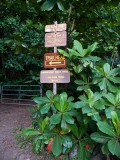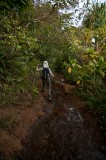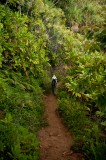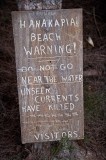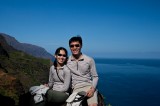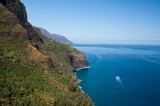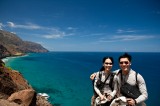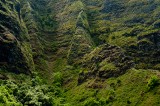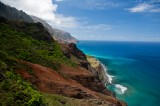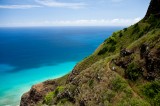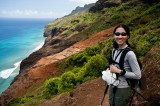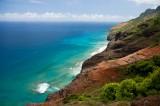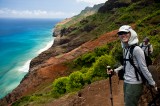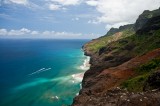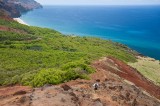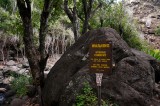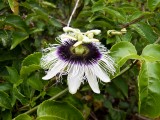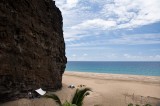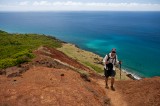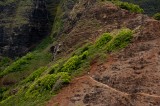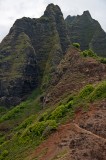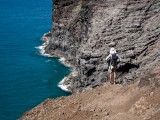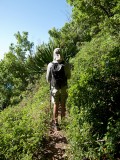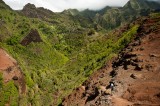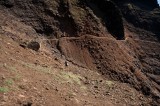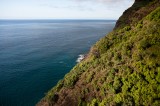
Kalalau Trail
The Kalalau trail is about 22 miles round trip with an elevation change of around 4500 ft each way. The reason for all that elevation change is because you have to traverse through a number of valleys on the way to the Kalalau valley, each of which involves a moderate amount of elevation change. Hikers typically tend to do the Kalalau trail as an overnight backpacking trip where they hike in the first day, camp overnight on Kalalau beach, and then hike out the next day. A permit is required to even dayhike the trail, and we weren't able to secure permits in advance before leaving on the trip. We decided to day hike the trail because none of us wanted to camp overnight in hot and humid weather, and we also thought it would be easier to get a permit for one day rather than two.
On the day we arrived in Kauai, we showed up at the permit office, stood in line, and managed to secure the last permits for the next day --- our luck in securing permits at the last minute was probably directly related to the low prices (i.e. low demand) that enticed us to Kauai in the first place.
The hike lived up to our expectations, with interesting flora on the first half of the trail, and spectacular views in the second half of the hike. The views only started getting really good after Hanakoa beach when the trail emerges from the vegetation and becomes more exposed.
For this hike, we brought about 24 gels each (1/3 caffeinated), and a bar of chocolate for the rest break at the end of the beach. After too many long alpine climbing days in the Sierra where I hit the wall after 10 hours or so, I discovered that you had to eat every hour despite not feeling hungry, and so you should just bring food that you can stomach. Forcing yourself to eat is a more serious problem at altitude where you lose your appetite, but a similar kind of appetite suppression occurs in hot and humid weather. As a result of the constant eating and hydration, Serene and I felt great throughout the day and maintained a reasonable pace without feeling tired on both sections of the hike.
We were also lucky with the mud and we only encountered one small muddy section on the trail (we'd read trip reports complaining about horrendous mud along the trail). The reputed narrow section called the Balcony was actually quite wide and wasn't bad at all. The main problems on the trail was dealing with the heat and humidity, which we were prepared for by wearing very thin synthetic long sleeve tops, running shorts for me, and trail runing shoes. Hiking poles weren't as useful as I anticipated because the trail was frequently too narrow to effectively use them. Shorts weren't the greatest idea either because the trail was quite overgrown at many sections and it would have been nicer to be wearing pants then. The only equipment snag on the trip was that the batteries in Serene's headlamp were completely drained when we turned it on about a mile from the trailhead. I gave Serene my headlamp and used a keychain emergency light that worked, but made for slow going. I thought that light was pretty bad until we ran into a couple about half a mile from the trailhead who were slowly making their way back using the light from the guy's watch. We bracketed them with our two functioning headlamps and we all made it out to the trailhead safely.
